How to Stop a Dog from Pooping or Peeing in a Crate: 7 Tips
Puppies can bring unbridled joy to your lives. Bringing your first one home can actually be one of the fondest memories of your life.
Unfortunately, you’ll realize pretty quickly that nurturing, training, and caring for a dog is hard work. Potty training, for example, is one of the most difficult responsibilities a dog owner has to undertake.
That’s why it’s doubly frustrating when your pup ignores all that training and still goes in his crate. However, there’s no need to panic; every dog is prone to these kinds of accidents.
Their small bladder can only hold it in for 3-4 hours, with that time getting halved when they’re feeling anxious or distressed. Having said that, with patience, you also need a solution. So, how to stop a dog from pooping or peeing in a crate?
As cliche as it may sound, positive reinforcements are the key to potty training your dog. Taking him outside to relieve himself every two hours while praising him when he obeys you is one way. Another option could be setting up a proper potty pad and playpen setup that encourages him to get out of his crate.
If the problem still persists, then we might have a few more ideas on why your dog doesn’t want to pee outside of his crate. The rest of this post will discuss those ideas in detail and provide you with tips on how you can rid your dog of this annoying habit.
Table of Contents
7 Tips on How to Stop Your Dog From Pooping or Peeing in a Crate
Knowing how to stop your 6-month-old puppy from pooping in the crate at night can be the toughest part of crate training. Having said that, it’s not at all impossible. Allow us to share some helpful tips with you.
1. Practice Proper Crate Training

A gentle and positive approach can go a long way in properly crate training your dog. This is especially true when you’re introducing the concept of a crate to your pup.
First interactions can stick in the minds of dogs, especially young puppies who haven’t spent too long with their new doggy parents. So, make sure you never force him to go into the cage.
Make it feel like a home instead of a prison. Reward him when he enters, put some treats in there to entice him, and don’t lock the door for his first few attempts.
Acts like these will indicate to your pup that the crate is indeed a safe space and not a punishment. Also, it is really important to never leave him in there for more than 6 hours at a time. Otherwise, his small bladder will give out, and you’ll have no one to blame but yourself.
2. Consult a Vet to Rule out Medical Issues
It’s completely normal for young puppies to have accidents when you’re not around to take them outside. However, if you’re present in the house and these accidents keep occurring, then you might be dealing with a medical issue.
In that case, take him to the vet immediately, and he should help you diagnose the problem. A 12-week-old puppy peeing in the crate is usually the result of a urinary tract infection.
Alternatively, your pup’s medications could be causing him to drink more water and pee more as a result. Older dogs can also suffer from anxiety in the presence of guests who are being unusually loud.
This inevitably causes them to run back to their crate and often relieve themselves in there. An anxiety trainer could sort out these issues for you; just make sure whoever you hire has stellar reviews.
On the other hand, if the vet gives you the all-clear, then at least you were cautious and can now safely say that his accidents are all your fault (kidding!).
3. Make Sure Your Crate is of The Right Size
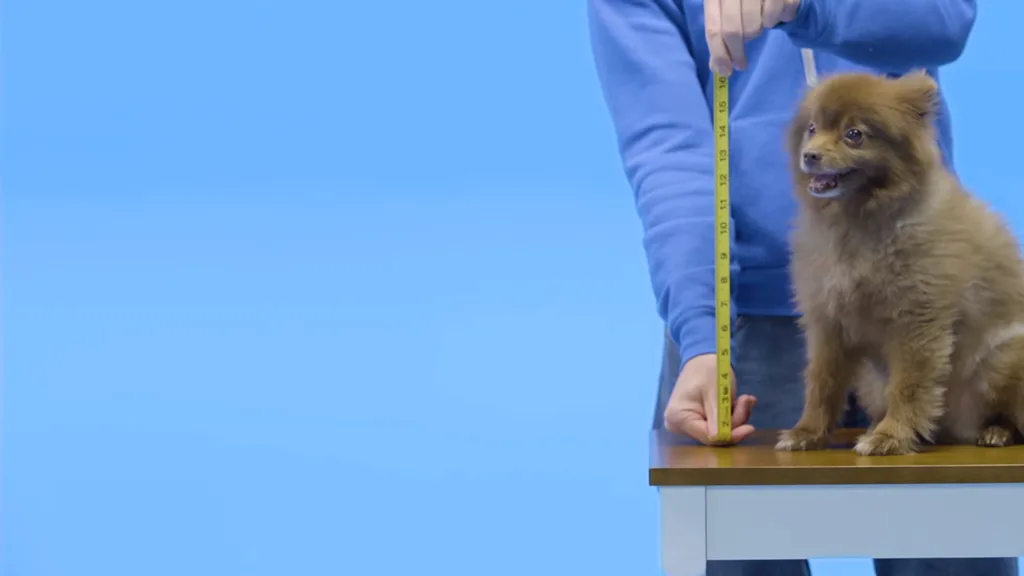
Most parents don’t realize it, but crate size is so important in ensuring that your dog doesn’t relieve himself in there. Now, that doesn’t mean that you buy your pup a huge crate right from the get-go.
Why? Well, dogs don’t typically like to lay in their poop, so they’ll naturally try to find a corner where they defecate and then try to find a spot to sleep that’s far away from it.
A large crate allows them to do that. Going the extreme opposite and buying a really small crate doesn’t work either because that’s going to hurt them.
The ideal crate needs to be tall enough for him to stand in. Plus, it should be wide enough for him to move about freely and lie down comfortably.
Luckily, there are adjustable crates available in the market now that can grow with your pup. Thus ensuring that your little one always has the right-sized crate.
4. Set Up a Clear Potty Schedule
While choosing the right crate size can definitely deter your pup from defecating indoors, you still need to establish an area that’s safe for peeing. Taking him outside regularly and after a set time can help establish a clear potty schedule.
We personally like taking our dogs out every two hours to accommodate their small bladder. We also try to take our dog outside as soon as he comes out of the crate.
Constant repetition of this act will make him unconsciously walk outside to pee as soon as the door opens. Like humans, dogs are creatures of habit and can easily fall into a routine if you make the effort.
Setting up a schedule works well enough when you’re at home, but what do you do when you have to go to work?
Well, hiring a sitter is one option, or you could just ask a friend to walk your dog at least once before you get home.
5. Clean Accidents Thoroughly
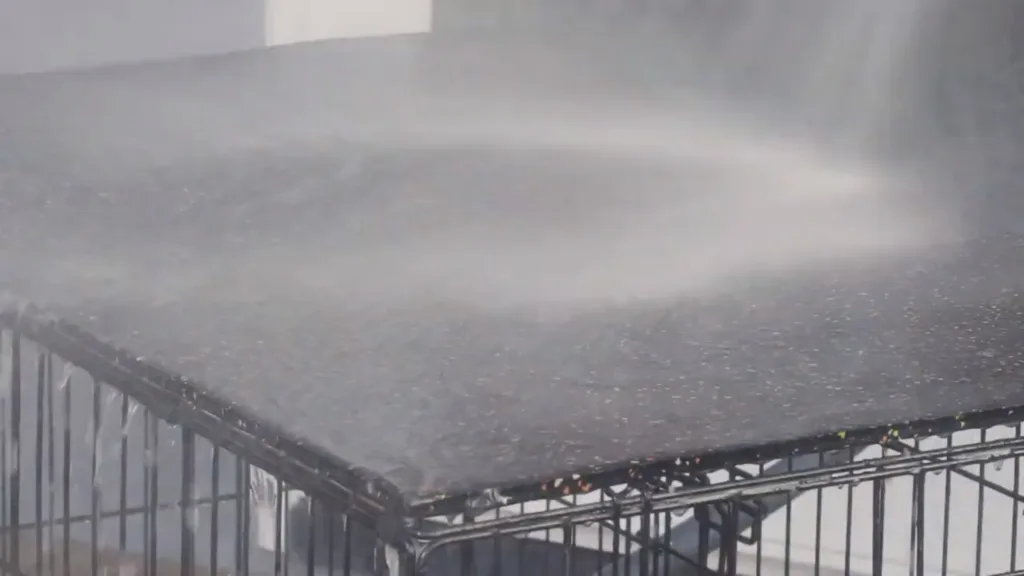
We’ve already established that dogs are creatures of habit. However, what you might not have realized is that it also applies to their actual potty spot. Have you ever noticed your dog peeing in the exact same location in the crate?
Dogs like marking their territory, which includes where they’re going to relieve themselves. That might be one of the reasons why your dog keeps dirtying his crate even after you’ve taken him outside numerous times.
The only solution then becomes cleaning that exact spot so thoroughly that you remove the underlying scents as well. Without the scent, your dog will eventually forget where he defecates, allowing you to train him to potty in the right location somewhere outdoors.
6. Praise Good Behavior
Ideally, dog training should be complete by the time your dog is 6 months old. Sadly, that’s not always the case, as we’ve personally witnessed 1-year-old dogs pooping in the crate.
And do you know the primary reason for that? Not enough positive reinforcement. We’ve been mentioning for a while now that practicing positive reinforcement is the way to go.
Only because we’ve seen the wonders it can do for a dog’s overall behavior. It teaches them confidence, trust, and even love.
If you praise your dog every time he poops outside, he’ll eventually assume that he’s done something good. In fact, it will get to a point that he poops outside, in your designated location, just to receive your praise (and a treat).
7. Send Him to Bed With an Empty Stomach
You’ll have noticed that we’ve covered in detail how to keep your dog from peeing in his crate throughout the day. But how do you stop your puppy from pooping in the crate at night? Well, there’s an easy fix for that: just send him to bed fully empty.
It might be obvious, but a pup on an empty stomach is less likely to wet the bed at night than one who’s full to the brim. Now, that doesn’t necessarily mean you stop feeding him anything as soon as it gets dark out.
But what you could do is take him out one last time before bedtime for peeing and not feed him anything after. That way, both you and him can get a good night’s rest without any accidents. Otherwise, you better be prepared to wake up in the middle of the night for ill-timed potty breaks.
Why Dogs Pee in Their Crate
While at least one of the strategies listed above is bound to work, knowing what’s wrong with your dog can help you pinpoint why he keeps peeing in his crate.
On that note, here are a few common reasons why your dog might not want to leave his crate to pee.
Separation Anxiety
Some dogs are so attached to their owners that being separated from them can trigger a bunch of problematic behaviors. One of those problematic behaviors is not being able to control where they pee and poop, which is why they sometimes go into their crate.
Separation anxiety can develop naturally if you’re a little too clingy with your pet at the beginning but gradually lose interest in him as he gets older. It can also develop if your pup’s been through a traumatic event like a thunderstorm, a divorce, or an injury.
Separation anxiety does go away eventually, but only if you gradually distance yourself from him and set some boundaries. But don’t just leave him on his own altogether, as that could be worse.
Health Problems
Health issues, of both the physical and mental kind, can render your dog unable to hold to the potty schedule you’ve set up. UTIs (Urinary Tract Infections), in particular, can make it extremely difficult for them and even cause them pain in the process.
So, if you ever detect your dog showing symptoms of any illness take him straight to the vet to get their opinion. Remember, the earlier you act, the faster he gets cured.
They Have no Control Over their Bladder
Even without contracting UTIs, dogs have incredibly little control over their bladders. Especially young puppies who aren’t even 6 months old. The maximum amount of time they can hold it in for is 3 hours, and even that’s a stretch.
During times of anxiety, this time decreases drastically. A sufficiently traumatic event may even cause them to defecate on the spot.
That’s basically why we encourage all puppy owners to take their pup outside once every two hours for a potty break. We’re just hoping you follow through with our advice.
They’re Physically Limited
As dogs get older, their mobility decreases (kind of like humans). In fact, it can get to a point where an elderly dog might not be able to move a few steps before letting loose on the spot.
You’ll have to excuse them when they get to that age because getting out of the crate then becomes a very difficult job.
You might even notice your once small puppy poop in the crate and then lay in it. All you can do is just clean up his mess and try to comfort him as much as possible.
FAQs
Is it normal for my puppy to pee in their crate?
For the first few weeks of their training, it is completely normal for your puppy to accidentally wet his crate.
However, it is on you to make sure that it doesn’t continue even after months of training. In case it does, take your pup to the vet immediately and let the expert diagnose the problem for you.
What to do if a dog keeps pooping and peeing in the crate?
Dogs usually stop pooping and peeing in their crate after a couple of months of potty training, provided you use positive reinforcement.
With that said, if your dog continues to have accidents, then it’s your responsibility to get to the root cause of this problem. Is he feeling separation anxiety, is he suffering from a UTI, or has he just become used to having these accidents and prefers doing it inside now?
You can consult a vet or professional trainer for help, but you must uncover the root cause in order to come up with a solution.
How to prevent a dog from eating poop in the crate?
Cleanliness is the only way to ensure your dog doesn’t engage in coprophagia (poop-eating). Dogs get bored quite easily and turn to eating their own poop if it hasn’t been cleaned up.
On the other hand, anxiety can also cause this kind of behavior. The only solution for both is to keep his crate clean throughout the day by cleaning his messes immediately.
Why is my crate-trained dog pooping and peeing in their crate?
If your crate-trained dog is suddenly pooping in the crate at night and even during the day, then chances are he’s got some kind of medical condition.
How do you deal with a dog peeing and pooping in the crate due to separation anxiety?
Separation anxiety can be very difficult to get rid of. No dog parents like the sound of their pup whining and crying as they leave the room. However, you must toughen up and gradually make your dog more independent by leaving him on his own for some time.
Start by leaving the room for short periods and gradually increase the time you’re away to ultimately teach him to live in his own company. That should eventually stop your dog pooping and peeing in a crate due to separation anxiety.
What is dirty dog syndrome?
As apparent from the name, dirty dog syndrome means that a dog is okay with pooping and peeing in his living space. This usually occurs while keeping your dog in a dirty environment for long periods of time.
A pooch with ‘Dirty Dog Syndrome’ will often step, sit, and lay on his poop. Also, these dogs sometimes don’t even hesitate to eat their own defecation. This eventually results in them contracting some form of medical issue like a respiratory problem, skin infection, or digestive issues.
Why does my dog poop so much?
There could be a few reasons for your dog pooping more than normal. Firstly, younger puppies poop more than older dogs as their bladders are smaller. The same rule applies to small dogs and big dogs.
The diet also plays a role. For example, a dog taking a high-fiber diet will poop more than one taking a balanced diet. Medical issues can also cause excessive pooping. So, if you are worried, then you should take your dog to the vet immediately.
Do puppies pee in their crate when they’re mad?
While it can happen occasionally, puppies don’t usually pee in their crate when they’re mad. It can happen when they’re anxious or scared, maybe, but not when they’re mad.
So, if your puppy has suddenly started peeing in his crate, it’s most probably not because he’s angry with you but maybe because he’s scared or has separation anxiety.
Should I put a pee pad in my puppy’s crate?
Putting a pee pad in your puppy’s crate during the initial stages of his crate and potty training is absolutely fine. However, we wouldn’t advise keeping the pee pad in there after months of potty training, as that’s actually encouraging your puppy to go in the crate rather than outside.
Identifying the Cause: The Secret to Stopping Your Dog from Pooping and Peeing in a Crate
That about sums up all our thoughts on how to stop a dog from pooping or peeing in a crate. And we hope you understand how important it is to get to the root cause of this habit.
Just to reiterate, your dog may start pooping in his crate due to some medical issue, separation anxiety, or because they’ve been shut inside their crate for too long. The faster you get to the root of the problem, the faster you come up with ways to solve it.
At the end of the day, your dog is your responsibility, thus you must come up with ways to keep him safe and fulfilled. For more information relating to dog crates, houses, and kennels, make sure you check out some of our other posts. Now go enjoy playtime!
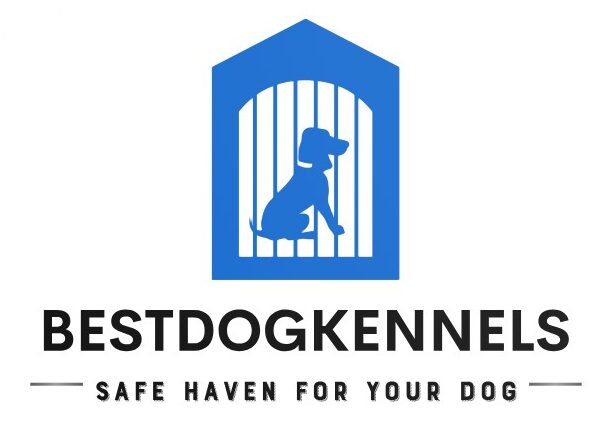
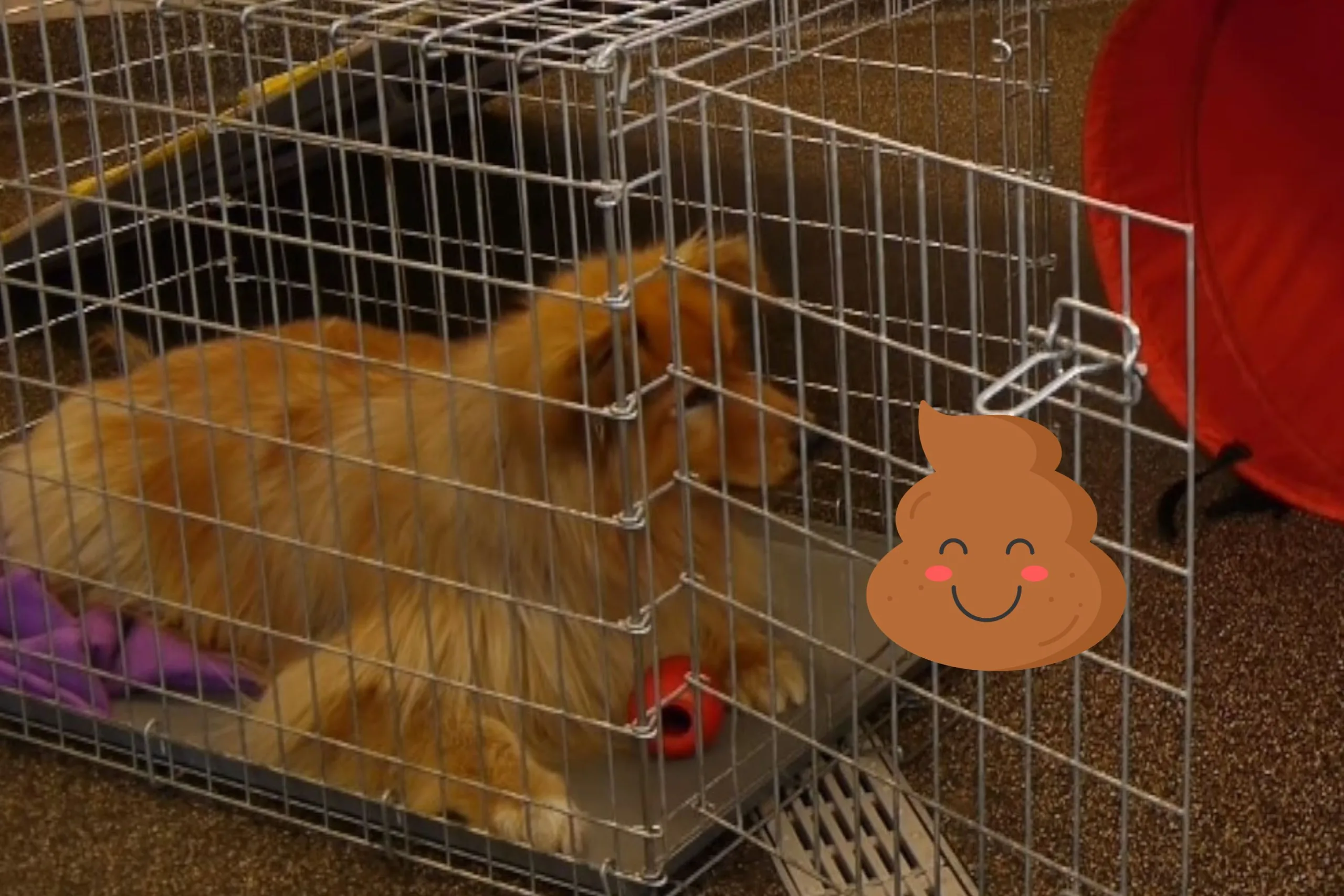
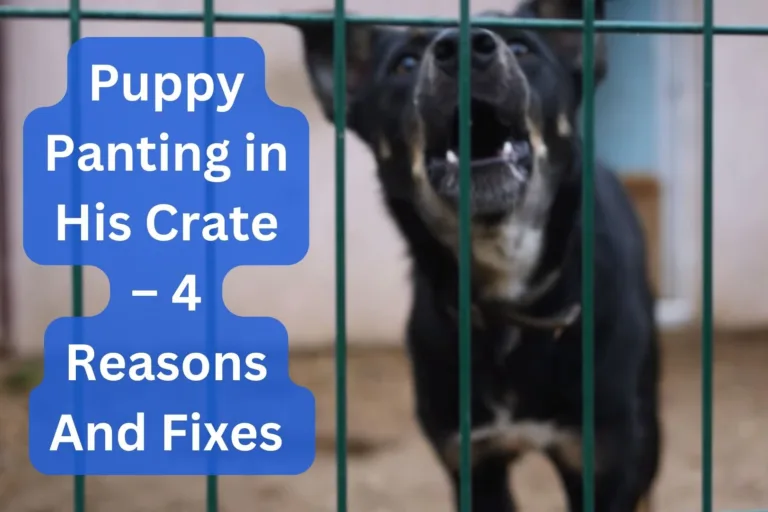
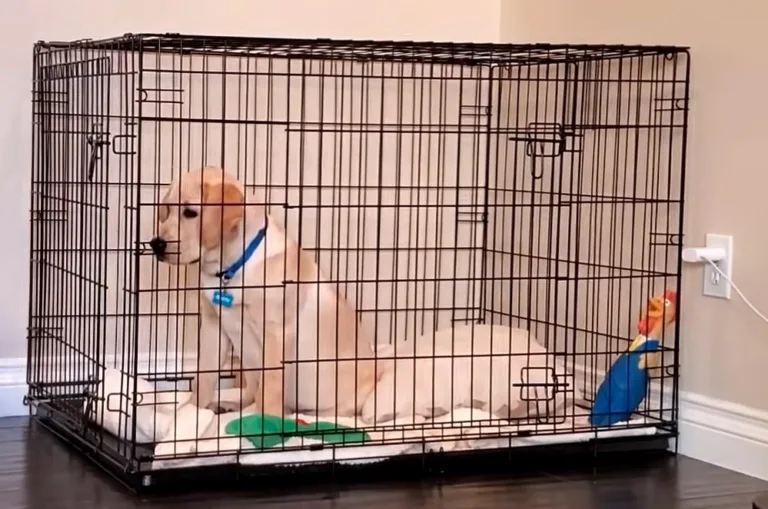
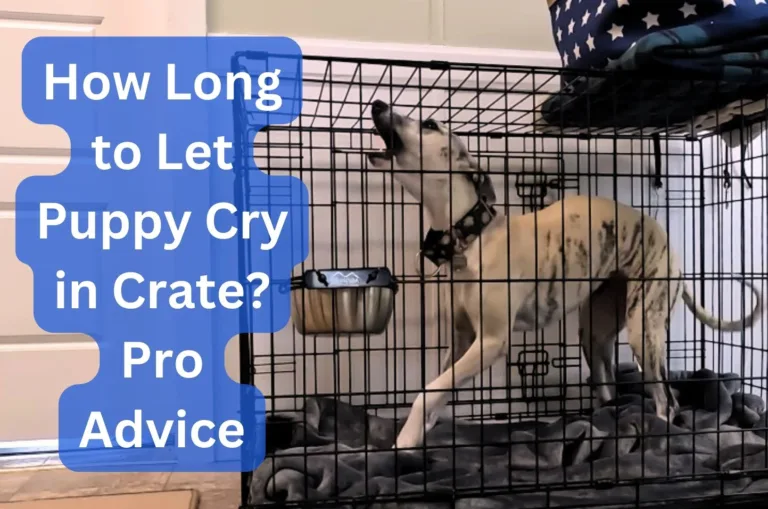



4 Comments